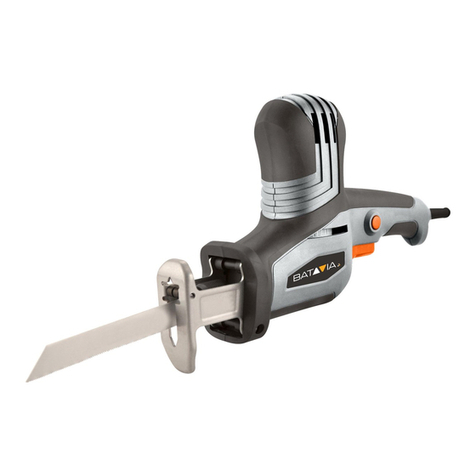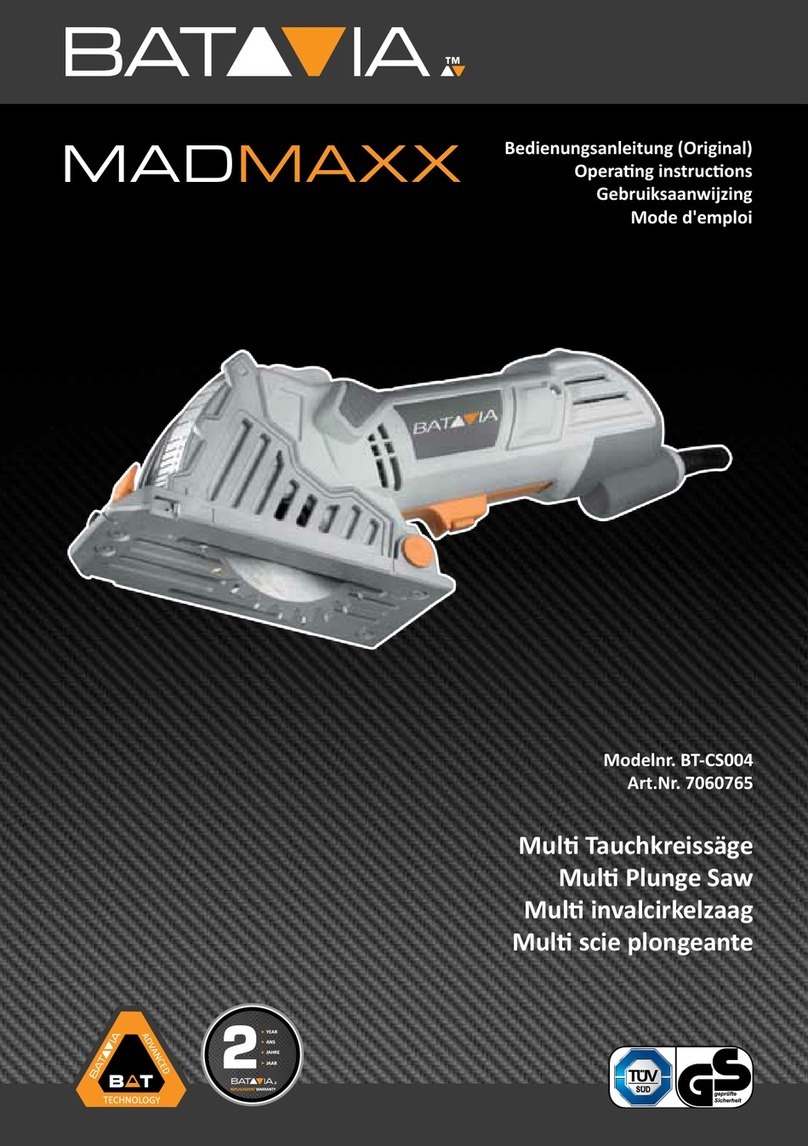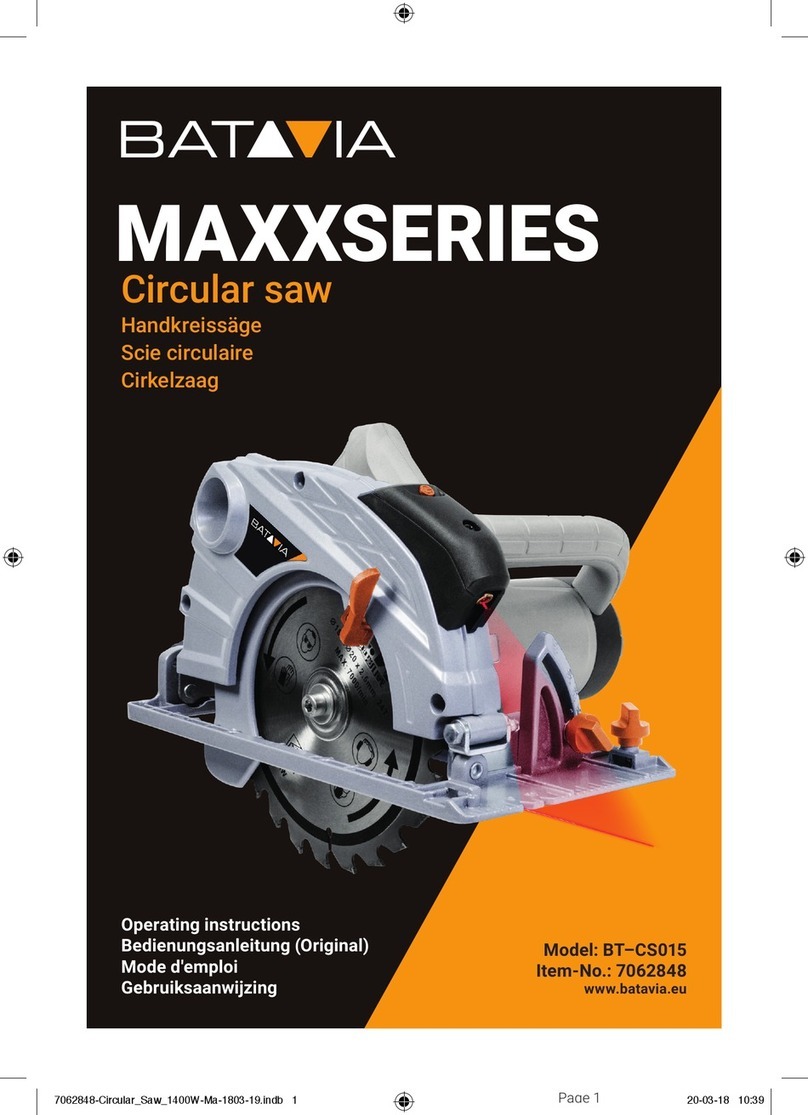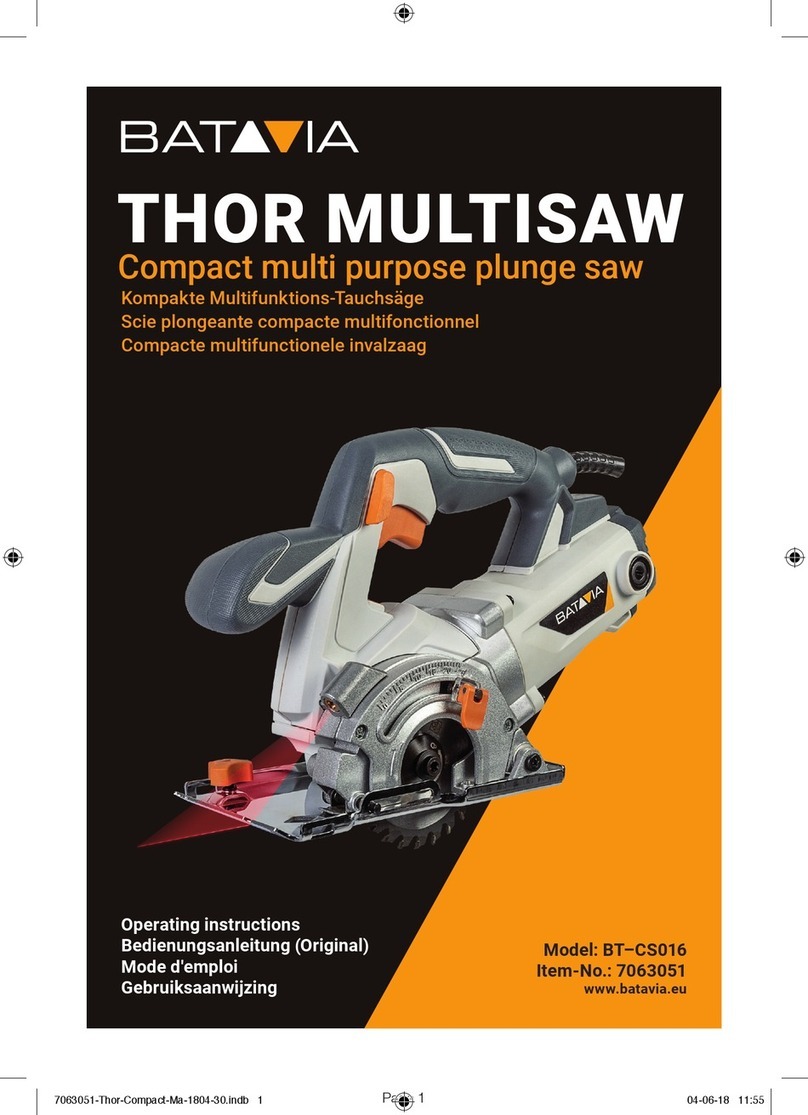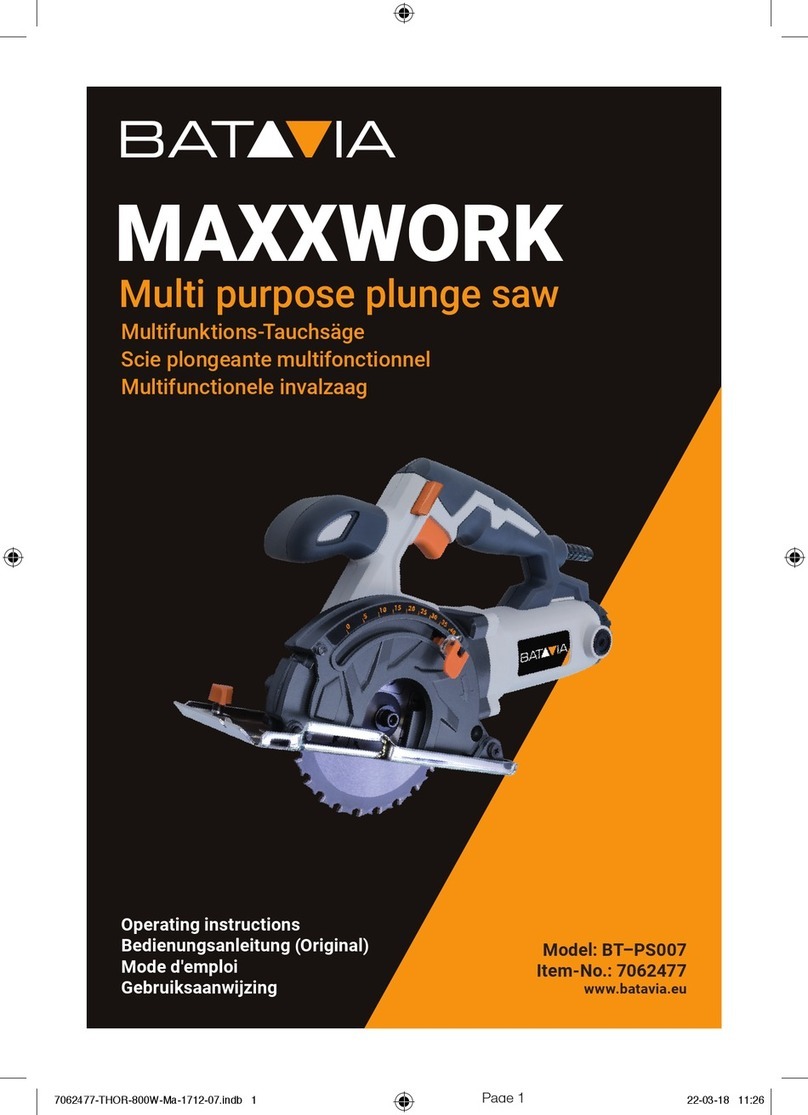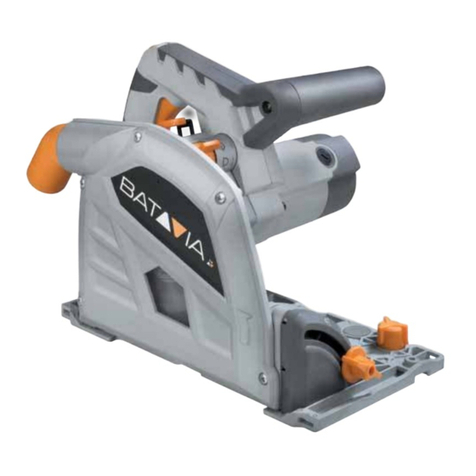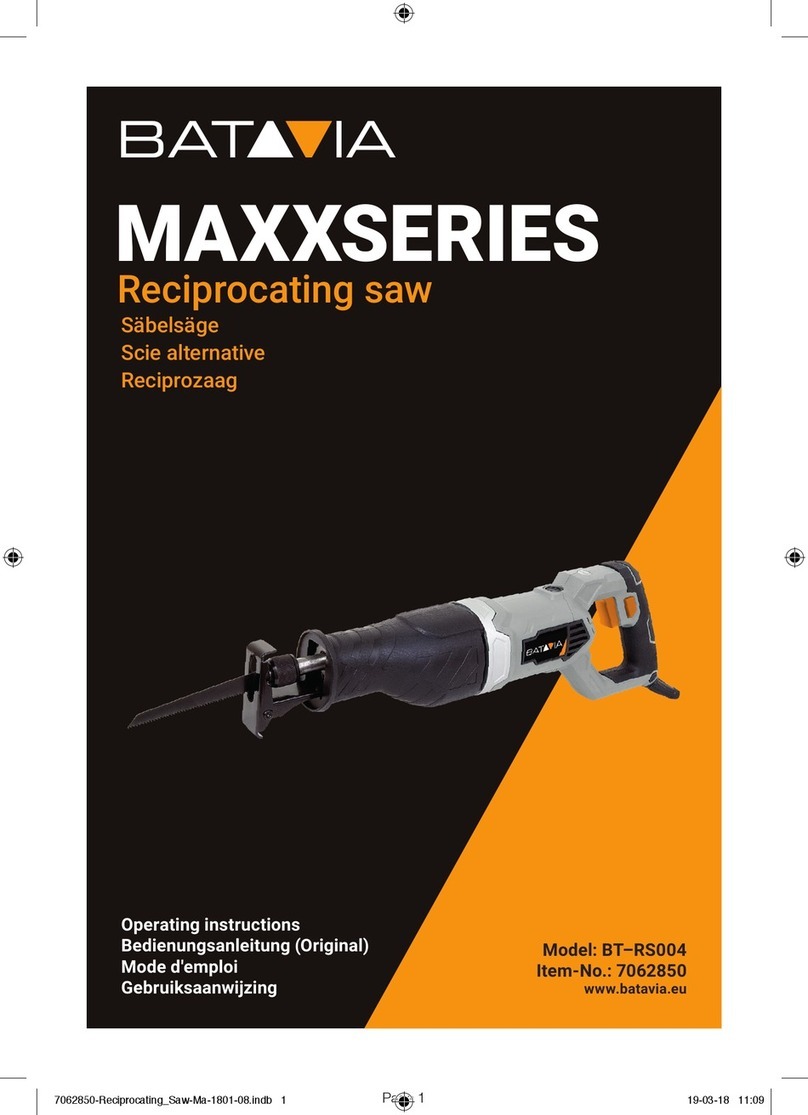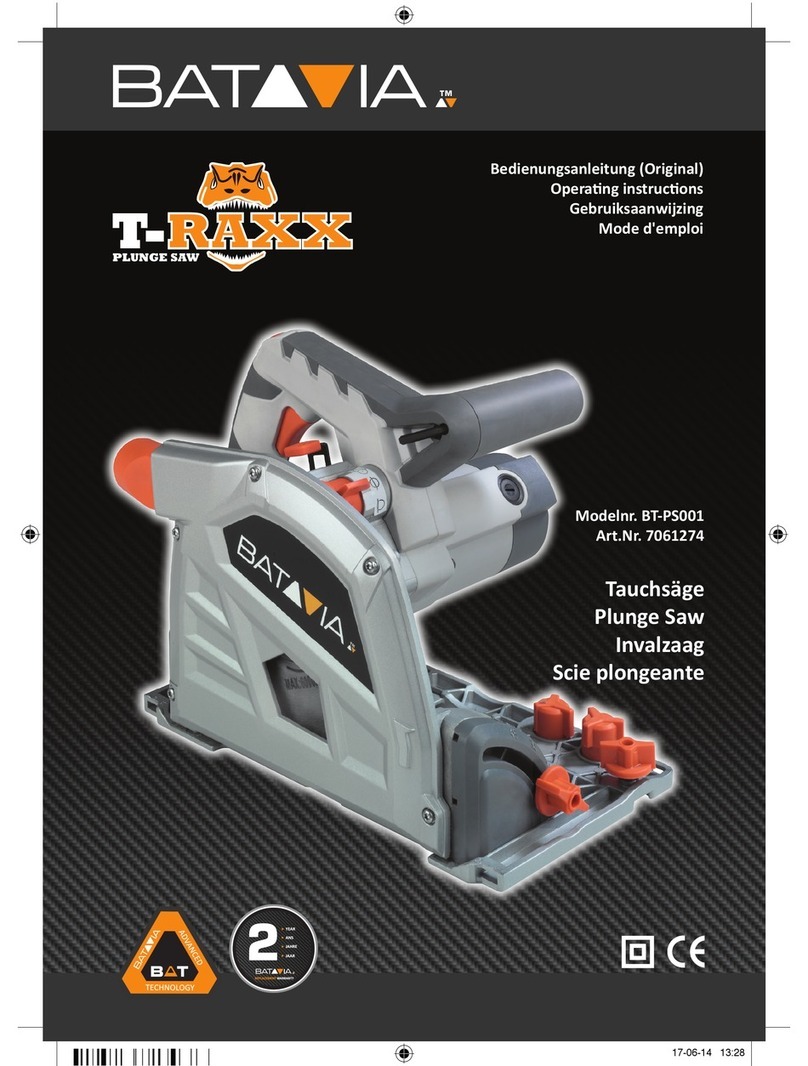
English
10
3.2 Do not use damaged or warped saw
blades.
3.3 Worn base plate inserts must be
replaced.
3.4 Use only saw blades which are recom-
mended by the manufacturer and corre-
spond to EN 847-1. Do not use HSS saw
blades.
3.5 If necessary, wear suitable protective
equipment. These are ear protection,
safety goggles, a dust mask and gloves
to protect your hands when handling
saw blades or coarse materials. (Saw
blades must, whenever possible, be
carried in a container). Please keep in
mind that wearing Gloves while operat-
ing the saw is a safety risk and should
not be done.
3.6 When cutting wood, always connect the
mitre saw to a dust extractor.
3.7 Keep your hands and other body parts
away from the rotating saw blade.
3.8 Secure all work pieces with the screw
clamp on the saw.
3.9 Before startling a cut, lock the mobile
base plate and the pivoting arm.
3.10 The ground around the machine should
be even, clean and free from debris
such as scrap pieces.
3.11 Use only sharp, straight saw blades in
good condition. Please observe the
maximum revolution speed of the saw
blade.
3.12 Do not reach unto the working area to
remove pieces or for any other reason
while the machine is running and the
saw assembly is not locked into the
resting position.
3.13 Make sure the machine is, if possible,
solidly mounted or clamped to a work-
bench or table.
3.14 Long work pieces should by all means
be supported with an additional support
such as a roller support.
3.15 Make sure there are no nails, screws or
similar items in the work piece.
3.16 Periodically check all nuts, bolts and
other xings and tighten where
necessary.
4. Safety instructions for mitre
saws
a. Mitre saws are intended to cut wood
or wood-like products, they cannot be
used with abrasive cut-off wheels for
cutting ferrous material such as bars,
rods, studs, etc. Abrasive dust causes
moving parts such as the lower guard
to jam. Sparks from abrasive cutting
will burn the lower guard, the kerf insert
and other plastic parts.
b. Use clamps to support the workpiece
whenever possible. If supporting the
workpiece by hand, you must always
keep your hand at least 100 mm from
either side of the saw blade. Do not
use this saw to cut pieces that are too
small to be securely clamped or held
by hand. If your hand is placed too
close to the saw blade, there is an
increased risk of injury from blade
contact.
c. The workpiece must be stationary and
clamped or held against both the
fence and the table. Do not feed the
workpiece into the blade or cut “free-
hand” in any way. Unrestrained or mov-
ing workpieces could be thrown at high
speeds, causing injury.
d. Push the saw through the workpiece.
Do not pull the saw through the work-
piece. To make a cut, raise the saw
head and pull it out over the workpiece
without cutting, start the motor, press
the saw head down and push the saw
through the workpiece. Cutting on the
pull stroke is likely to cause the saw
blade to climb on top of the workpiece
and violently throw the blade assembly
towards the operator.
e. Never cross your hand over the
intended line of cutting either in front
or behind the saw blade. Supporting
the workpiece “cross handed” i.e. hold-
ing the workpiece to the right of the saw
blade with your left hand or vice versa is
very dangerous.
f. Do not reach behind the fence with
either hand closer than 100 mm from
either side of the saw blade, to remove

